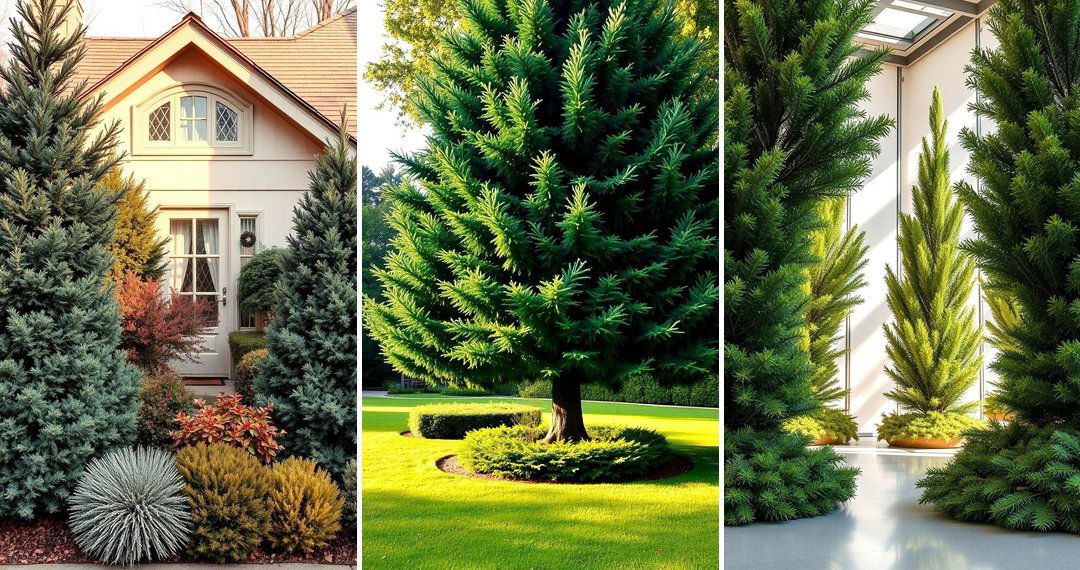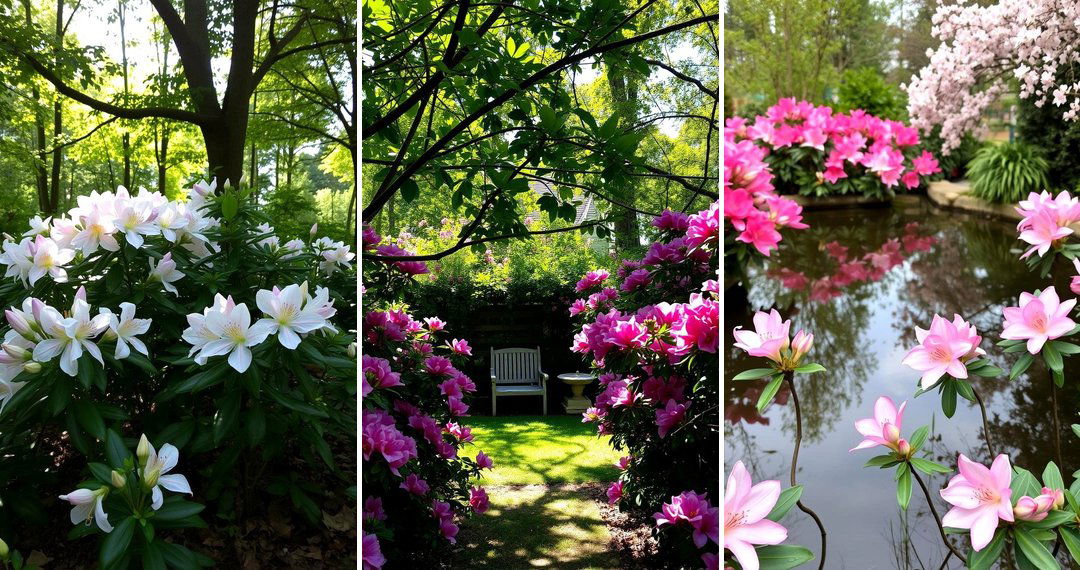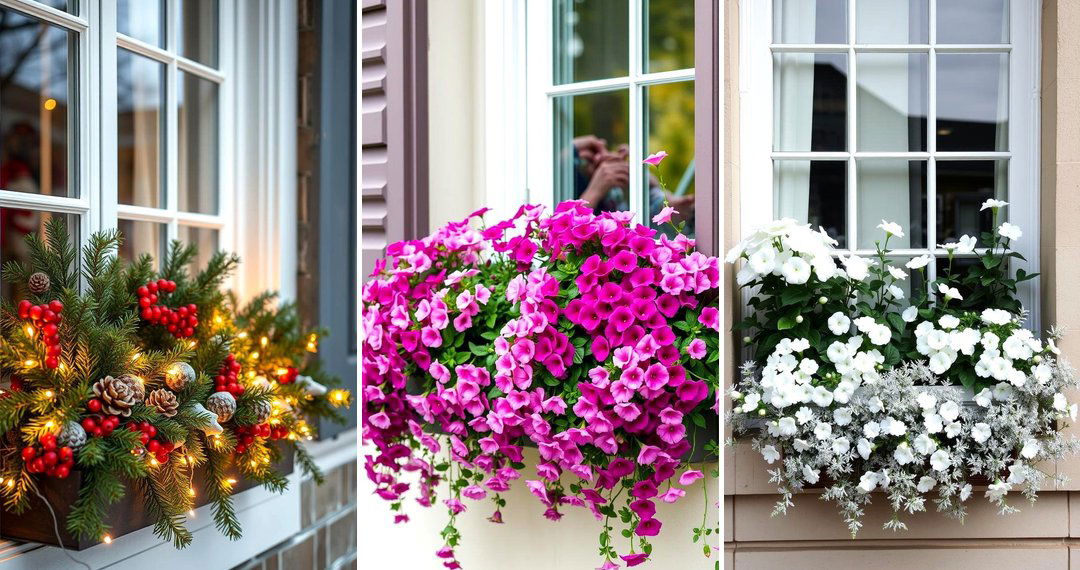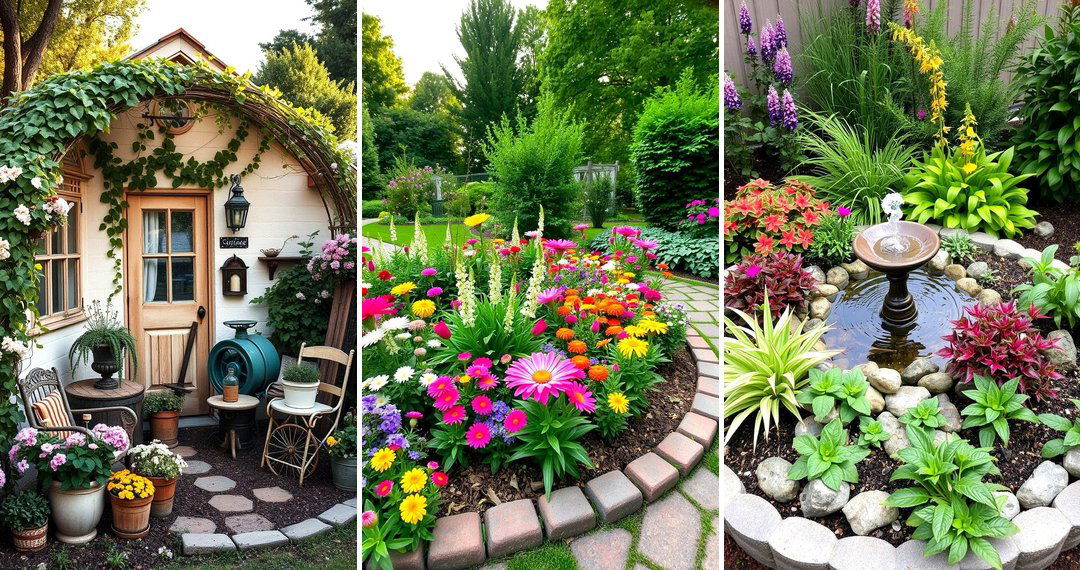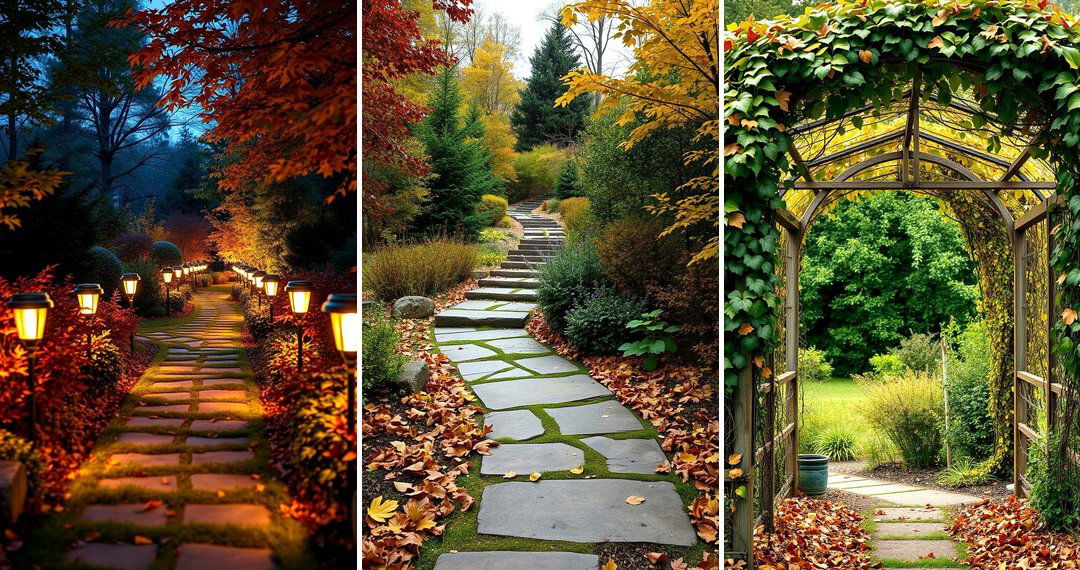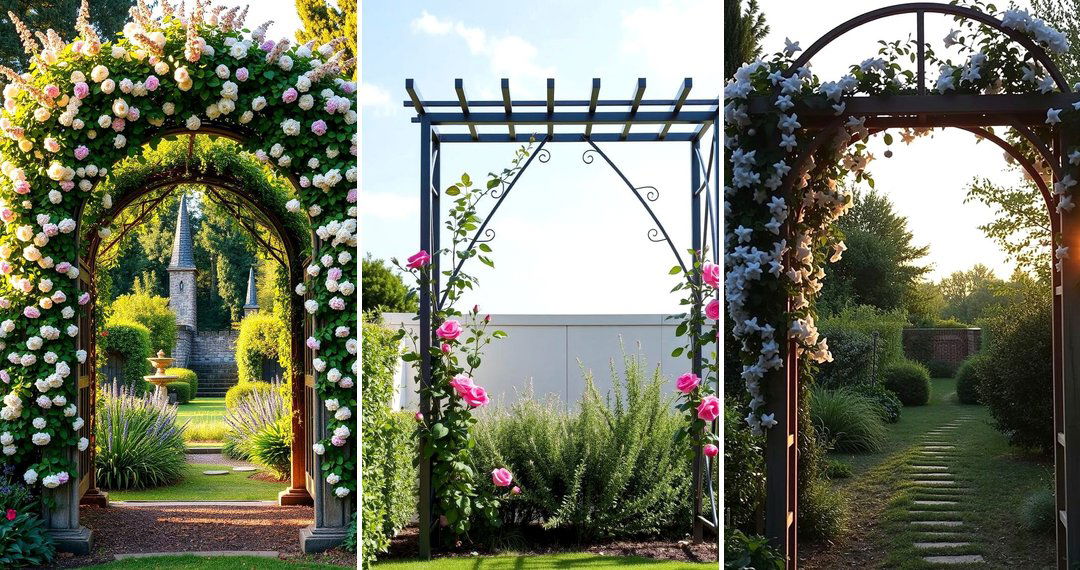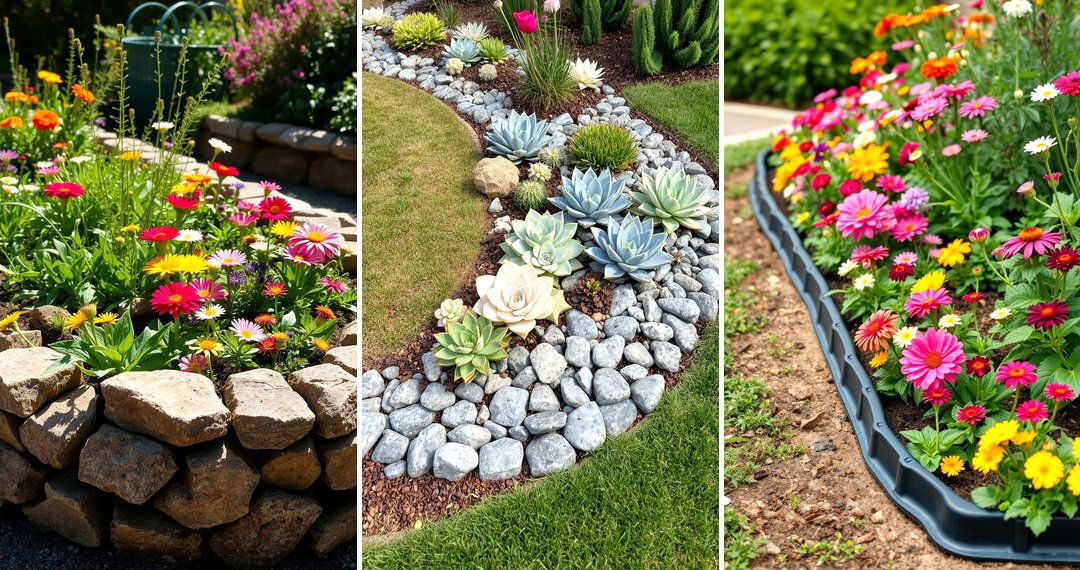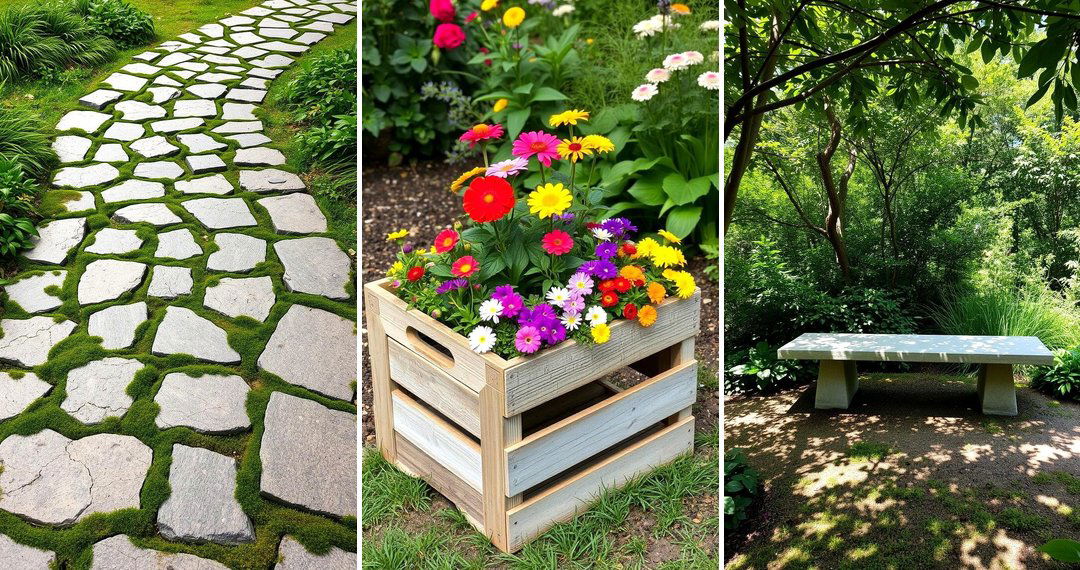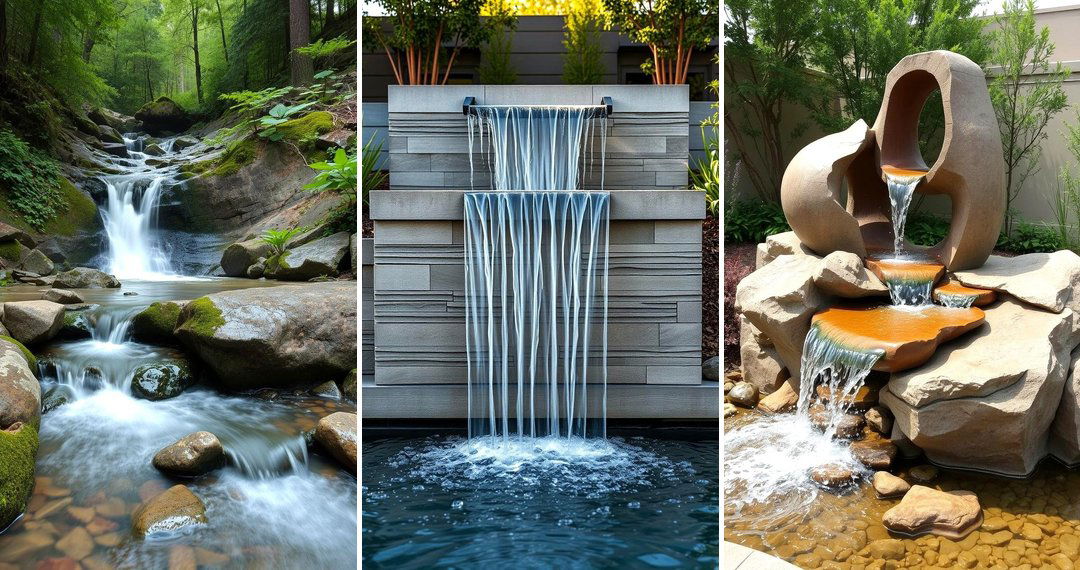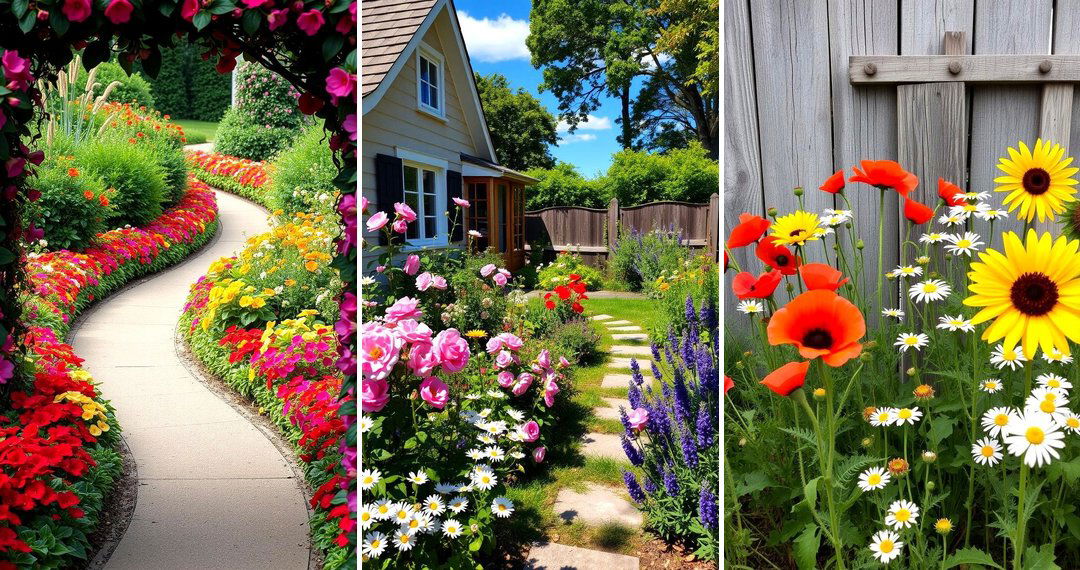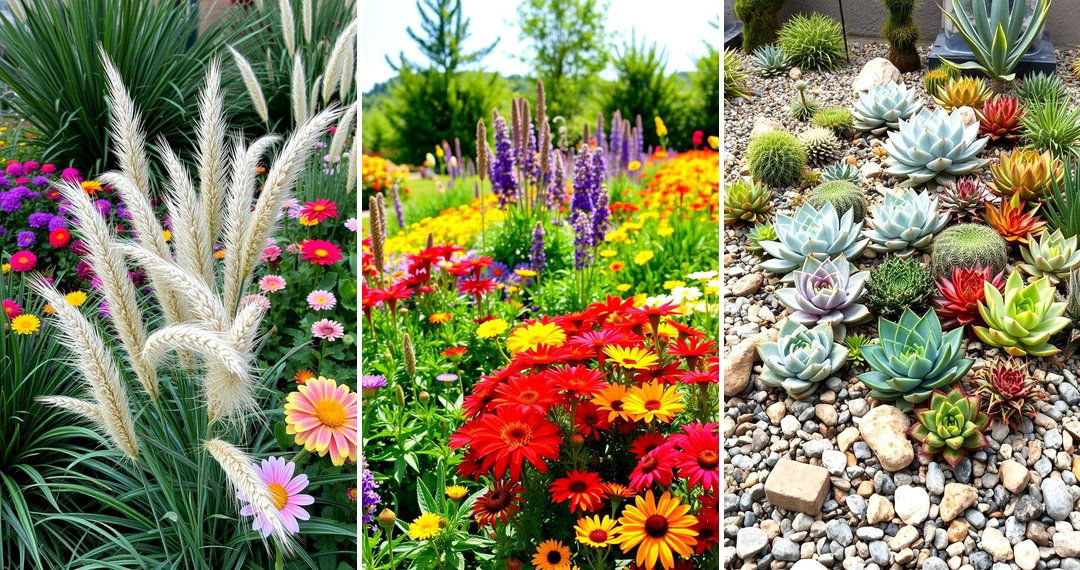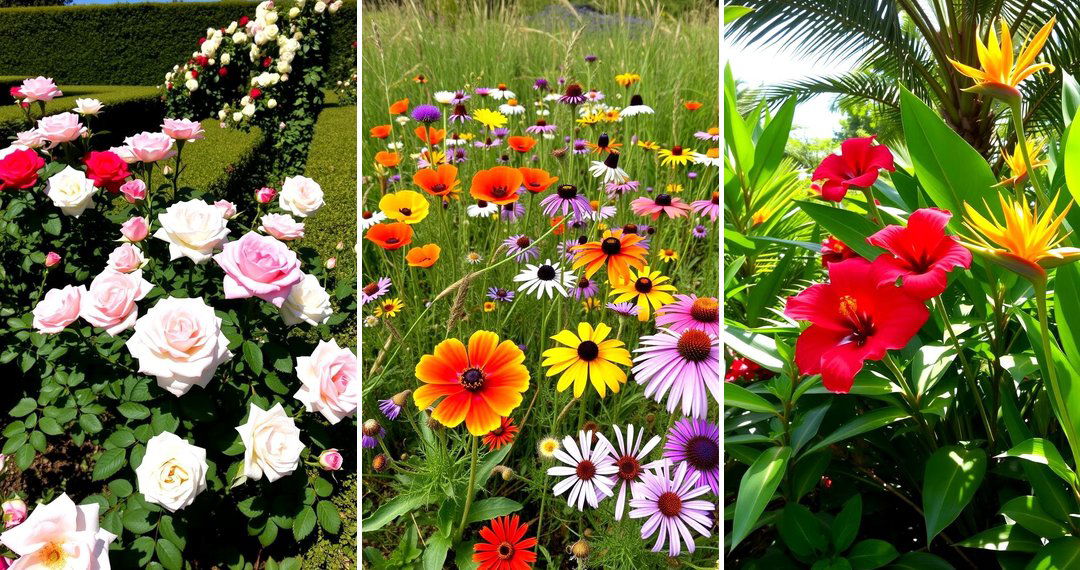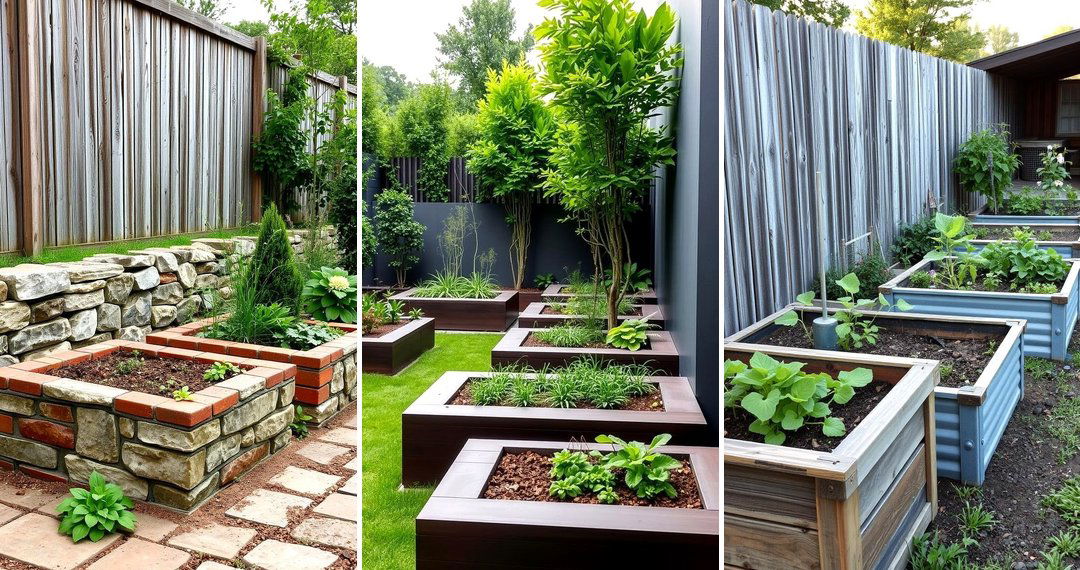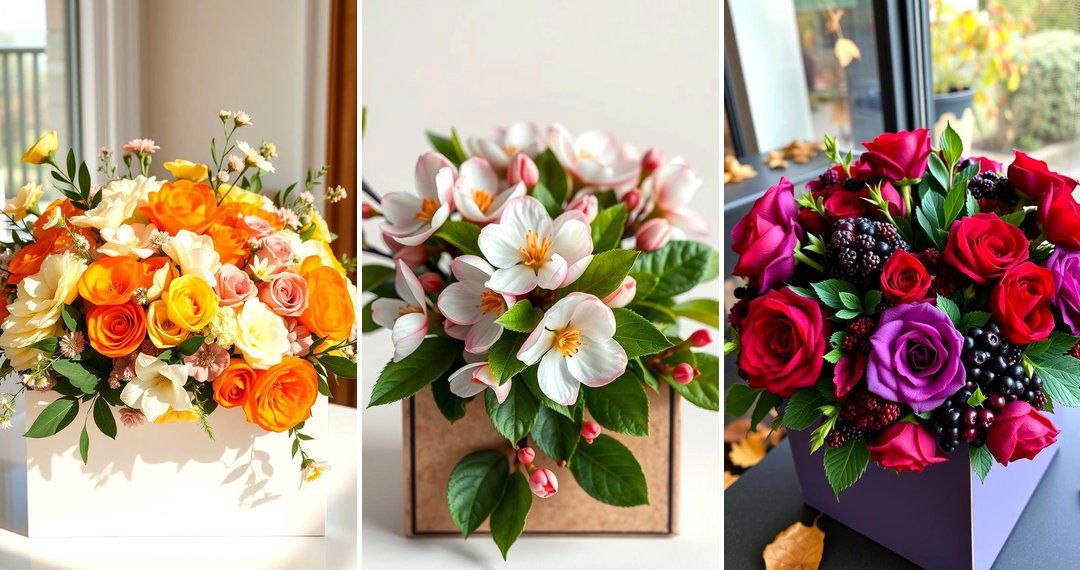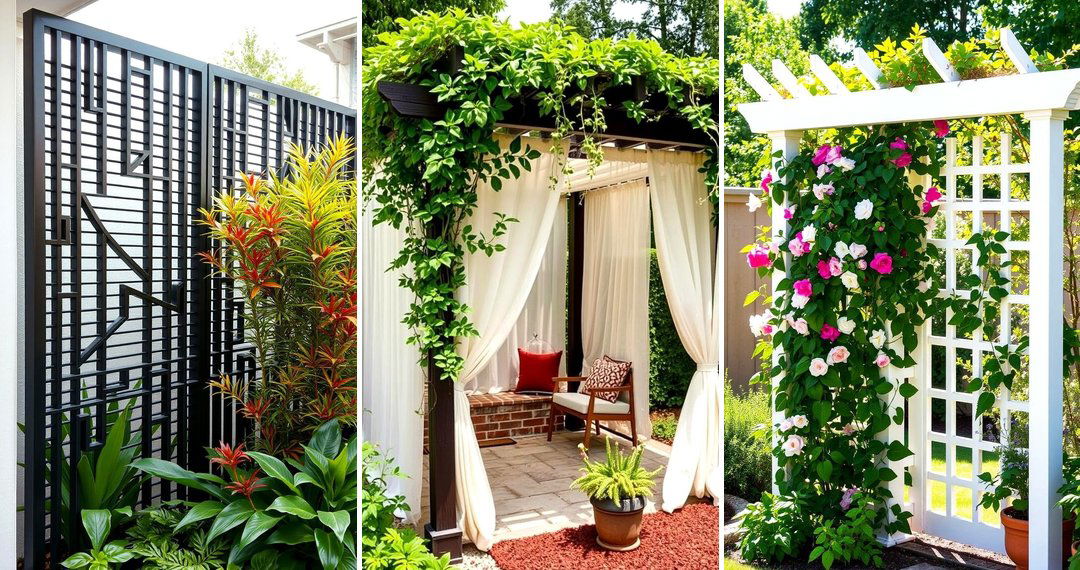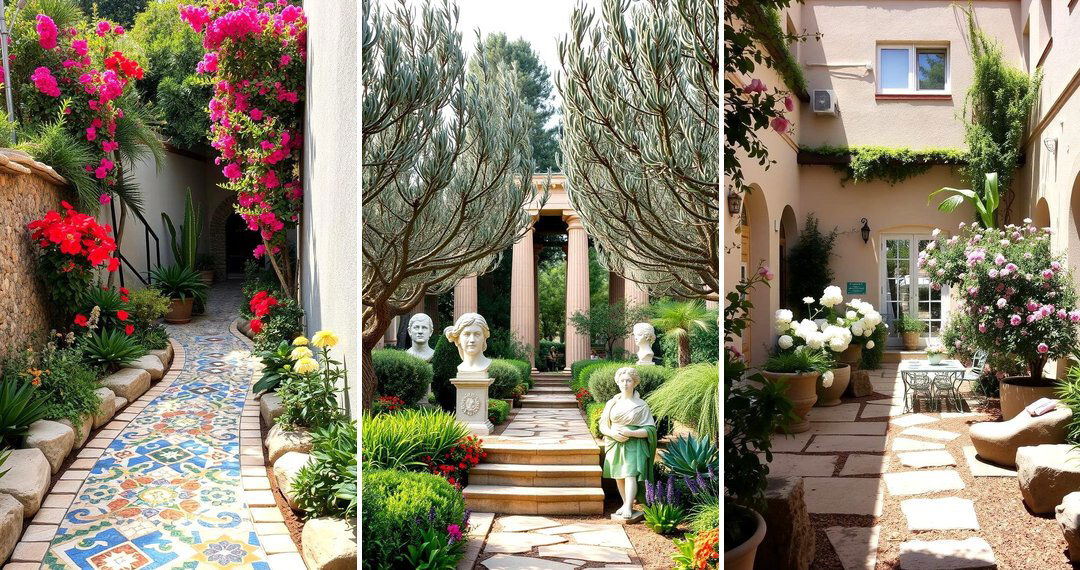Perennial flower beds offer a gift that keeps on giving, year after year, with their vibrant blooms and enduring beauty. Imagine the satisfaction of a garden that returns with renewed vigor each spring, painting your landscape with color and life without the need for annual replanting. For those seeking a sustainable and visually rewarding gardening experience, exploring the world of perennial flower bed ideas opens up a realm of creative possibilities. From attracting pollinators to creating stunning focal points, the right perennial choices can transform any outdoor space into a haven of natural charm. Let's delve into some inspiring concepts to spark your imagination and help you cultivate a perennial paradise.

1. Classic Cottage Garden Charm
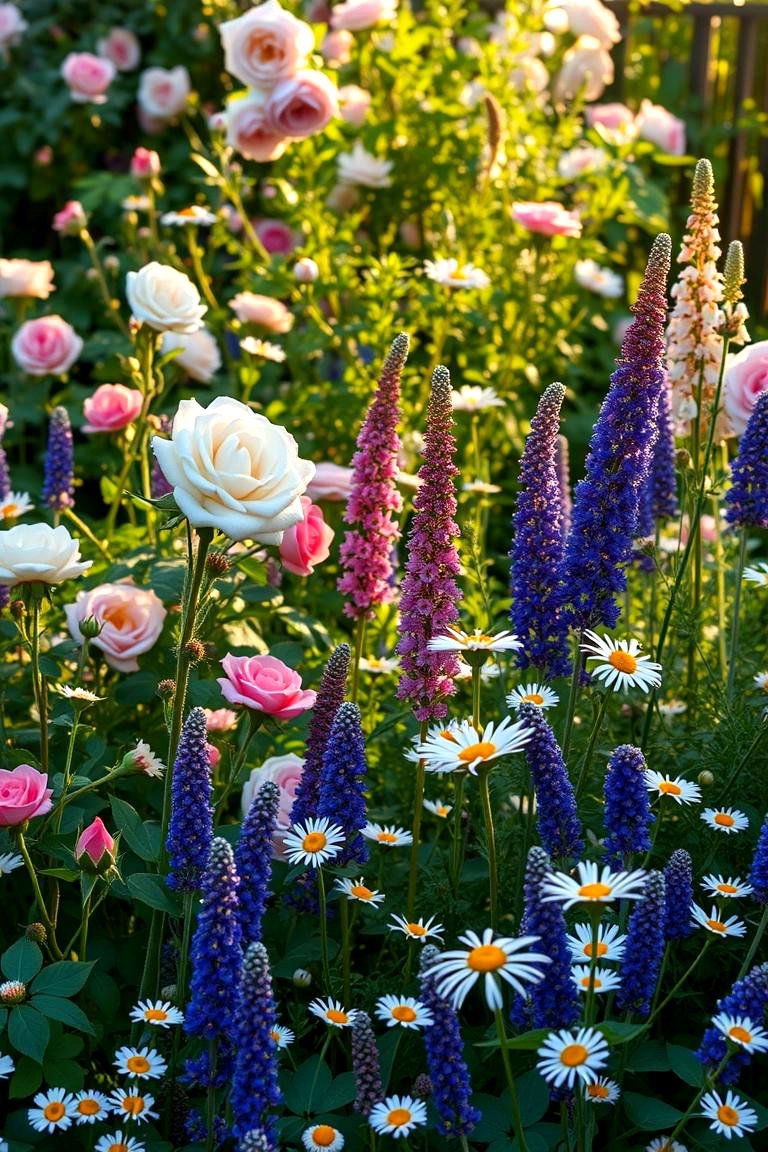
With a blend of informal beauty and abundant blooms, a classic cottage garden design brings a touch of romanticism to any landscape. For this style, consider combining a variety of perennials with different heights, textures, and colors, such as roses, foxgloves, lavender, and daisies. The key benefit here is the relaxed and overflowing aesthetic, creating a welcoming and visually rich environment that attracts beneficial insects and butterflies. Aim for a natural, slightly wild appearance, where plants mingle and self-seed, adding to the garden's charm over time. This approach offers continuous color throughout the growing season with minimal intervention.
2. Low-Maintenance Groundcover Carpet
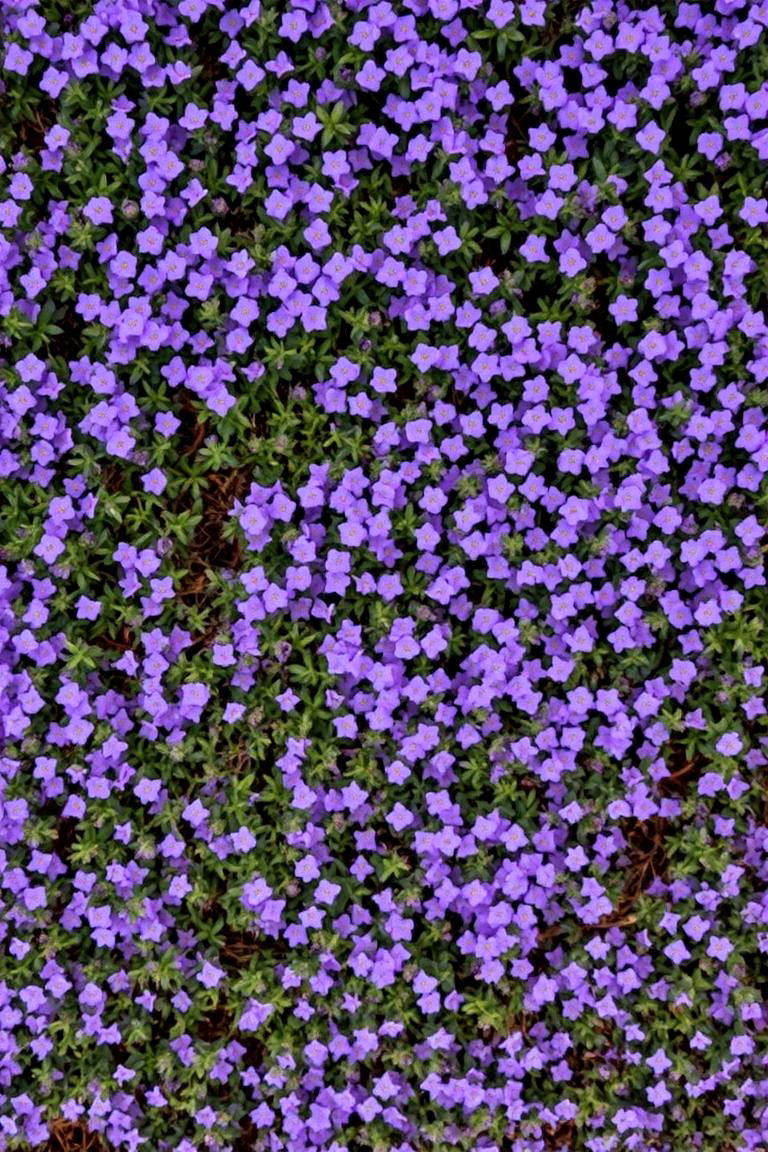
Looking for a beautiful yet easy-care option? Consider a perennial groundcover carpet. This idea involves selecting low-growing perennials like creeping thyme, sedum, or vinca minor to create a dense, weed-suppressing mat of foliage and flowers. The practical advantage is significantly reduced weeding and watering once established, making it perfect for busy gardeners or challenging slopes. Furthermore, these groundcovers often offer attractive textures and seasonal color changes, adding subtle beauty to areas where other plants might struggle.
3. Vibrant Pollinator Paradise
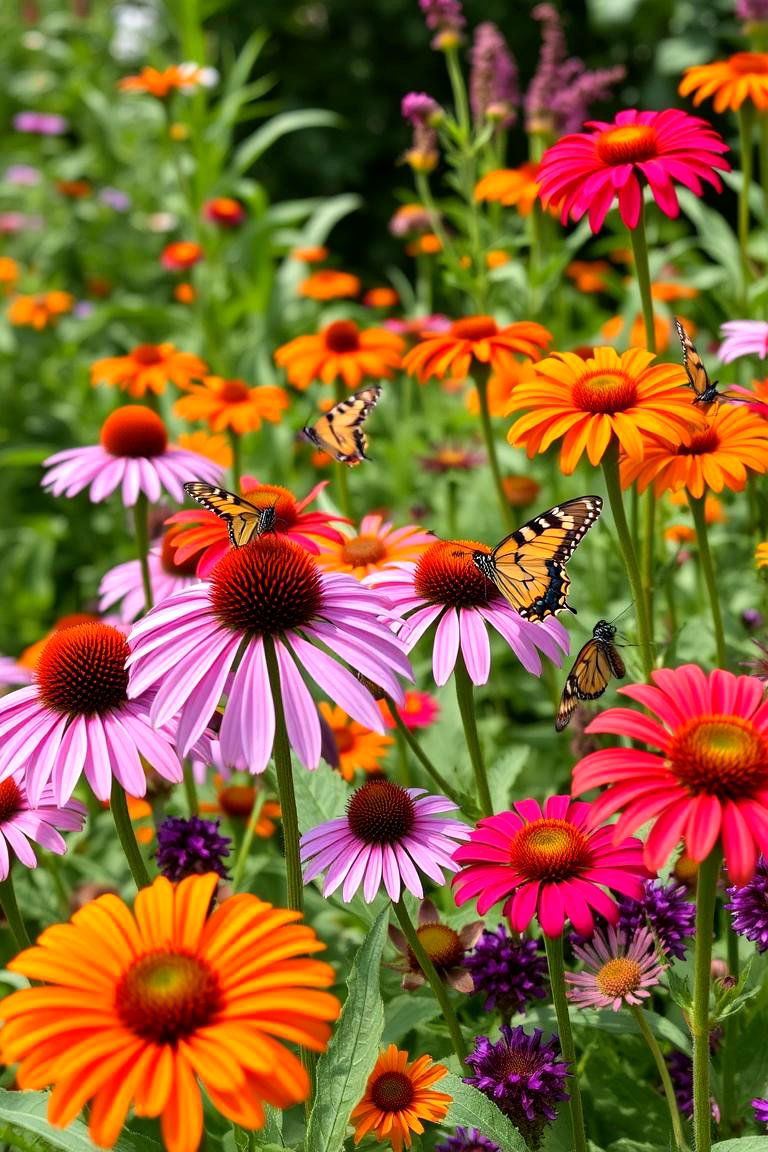
Take on the rewarding task of creating a perennial flower bed specifically designed to attract pollinators. For this, choose a diverse selection of nectar-rich and pollen-producing perennials such as coneflowers, bee balm, milkweed, and asters. The significant benefit is supporting local bee, butterfly, and other beneficial insect populations, contributing to a healthy ecosystem. Moreover, you'll enjoy a constantly buzzing and fluttering garden filled with life and vibrant colors throughout the seasons.
4. Elegant Monochromatic Display
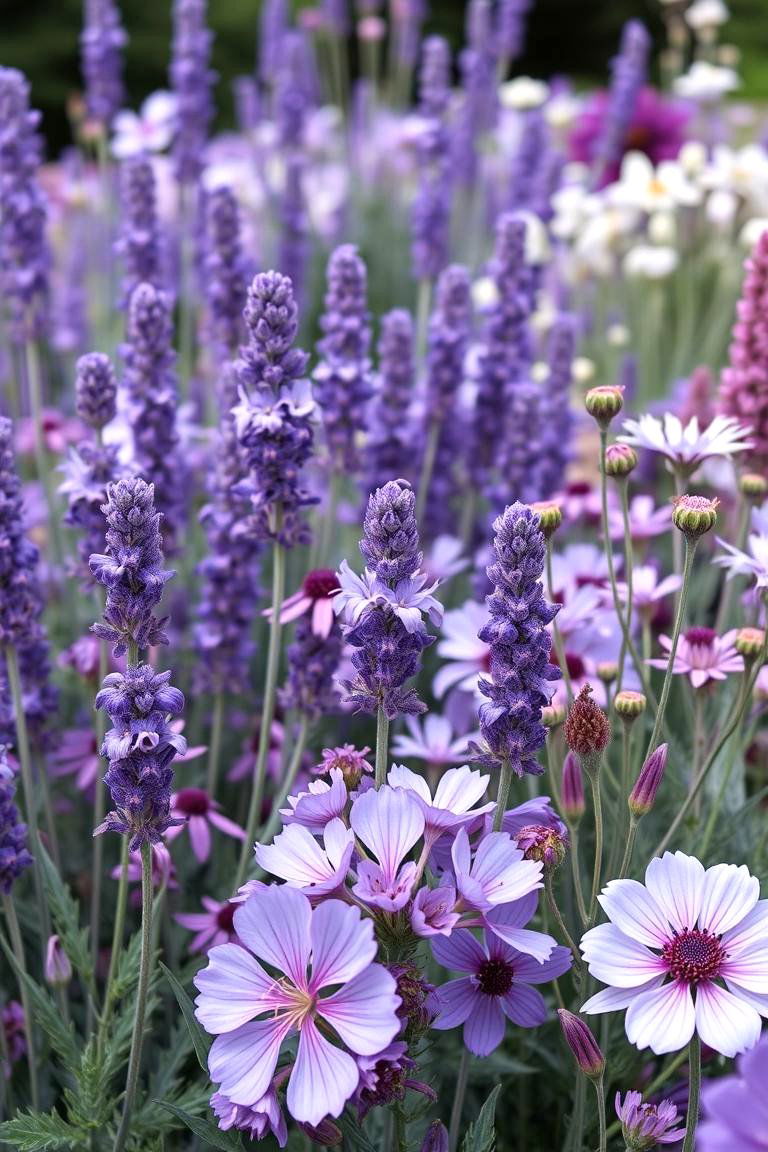
Consider the sophisticated impact of a monochromatic perennial flower bed. This involves selecting perennials that primarily feature a single color, such as shades of purple (lavender, salvia, alliums) or pink (peonies, phlox, echinacea). The key advantage is the creation of a visually striking and harmonious display that exudes elegance and calm. By focusing on variations in texture and form within the chosen color palette, you can achieve depth and interest without overwhelming the eye.
5. Textural Foliage Focus
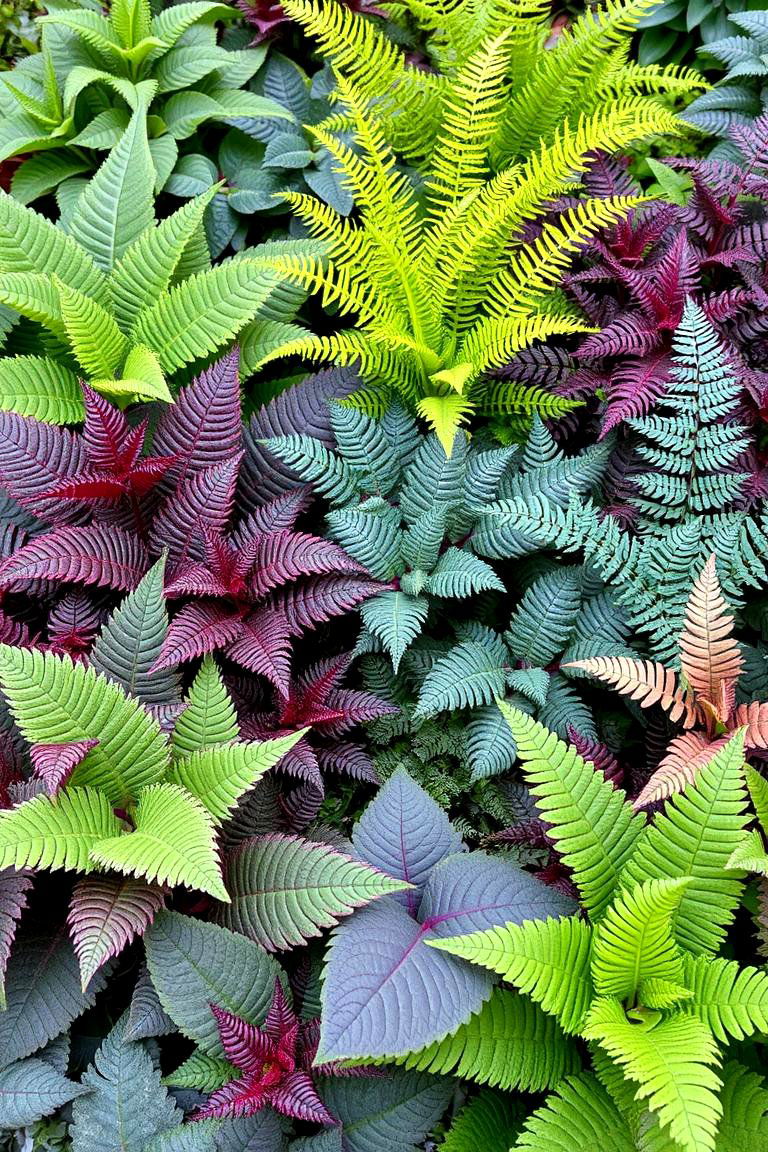
What if you prioritized interesting foliage over abundant blooms? A perennial flower bed that emphasizes textural foliage can offer year-round interest and a unique aesthetic. For this approach, incorporate plants like hostas, ferns, heucheras, and ornamental grasses. The primary benefit is the visual complexity and contrast created by different leaf shapes, sizes, and textures, providing a sophisticated and low-maintenance garden feature. The subtle changes in foliage throughout the seasons add another layer of appeal.
6. Sunny Slope Solution
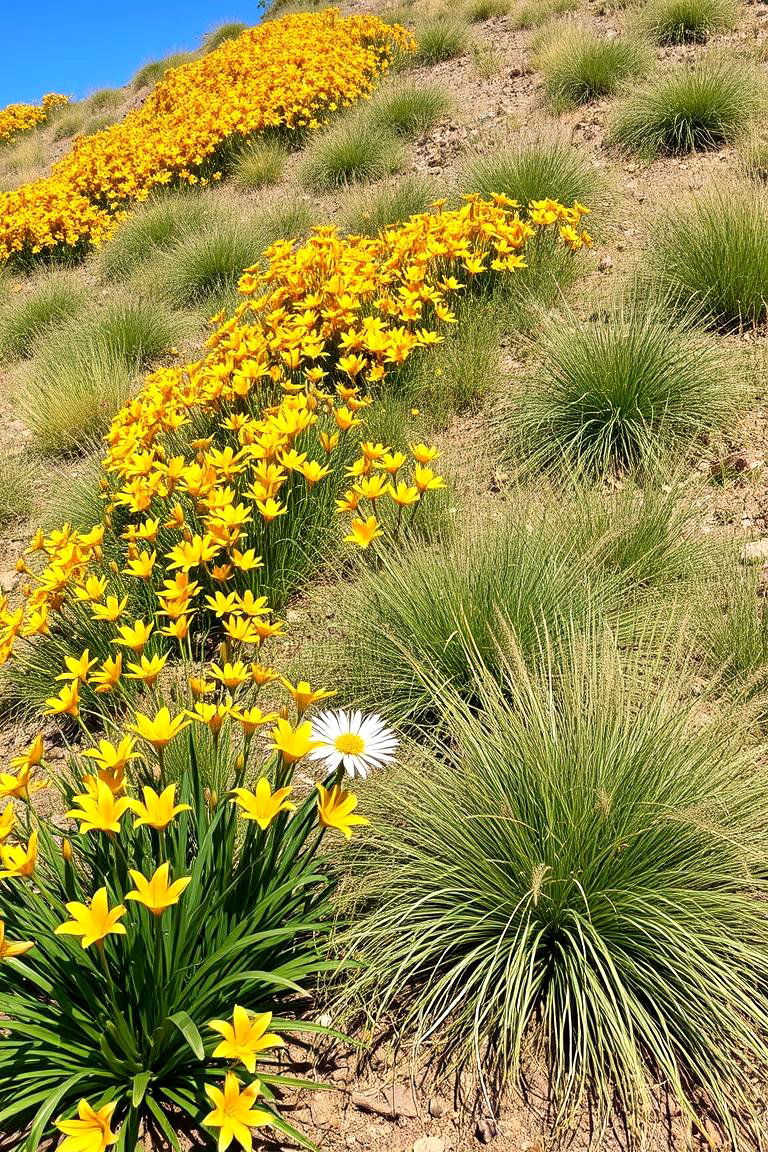
For those challenging sloped areas in your yard, a perennial flower bed can be both beautiful and functional. Choose drought-tolerant and erosion-controlling perennials like daylilies, coreopsis, and ornamental grasses. The practical advantage is effectively stabilizing the slope while adding visual appeal and preventing soil runoff. These plants are typically hardy and can thrive in well-drained conditions often found on inclines.
7. Shady Retreat Oasis
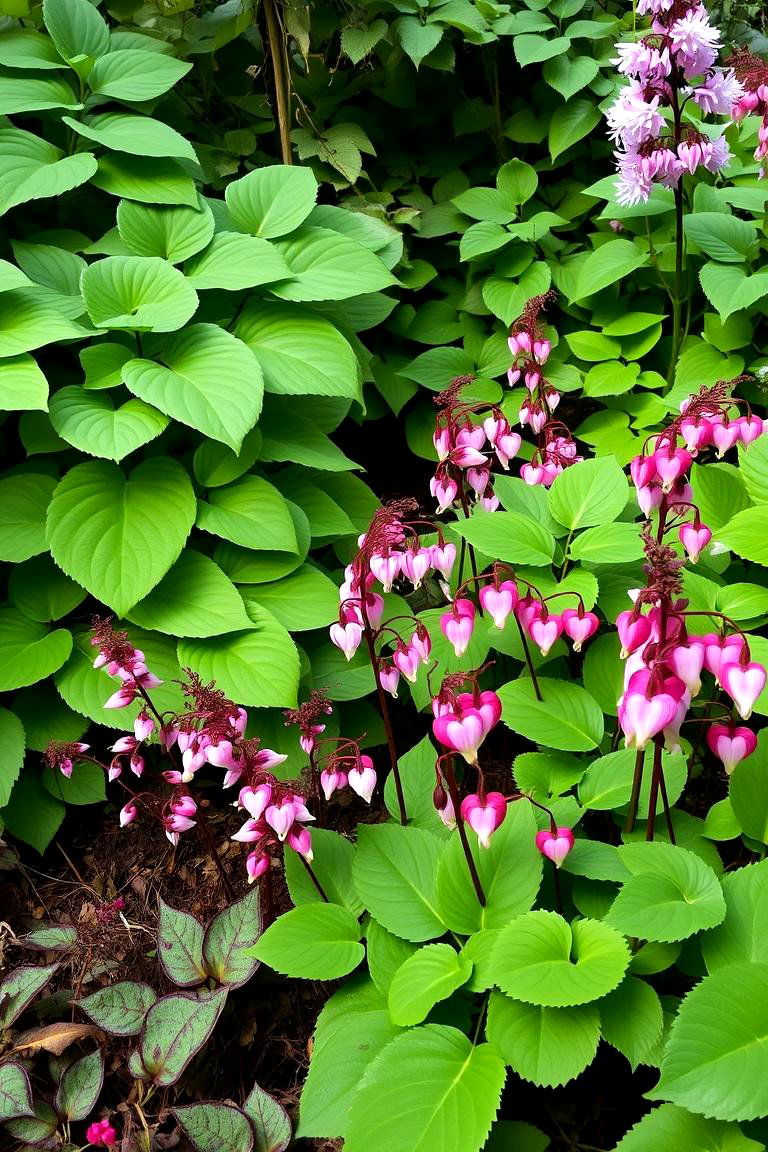
Do you have a shady spot in your garden that needs brightening? Design a perennial flower bed specifically for shade-loving plants. Consider hostas, ferns, astilbes, and bleeding hearts. The main benefit is transforming a typically underutilized area into a lush and tranquil retreat. These plants offer a variety of foliage textures and delicate blooms that thrive in lower light conditions, creating a cool and inviting space.
8. Long-Blooming Season Extender
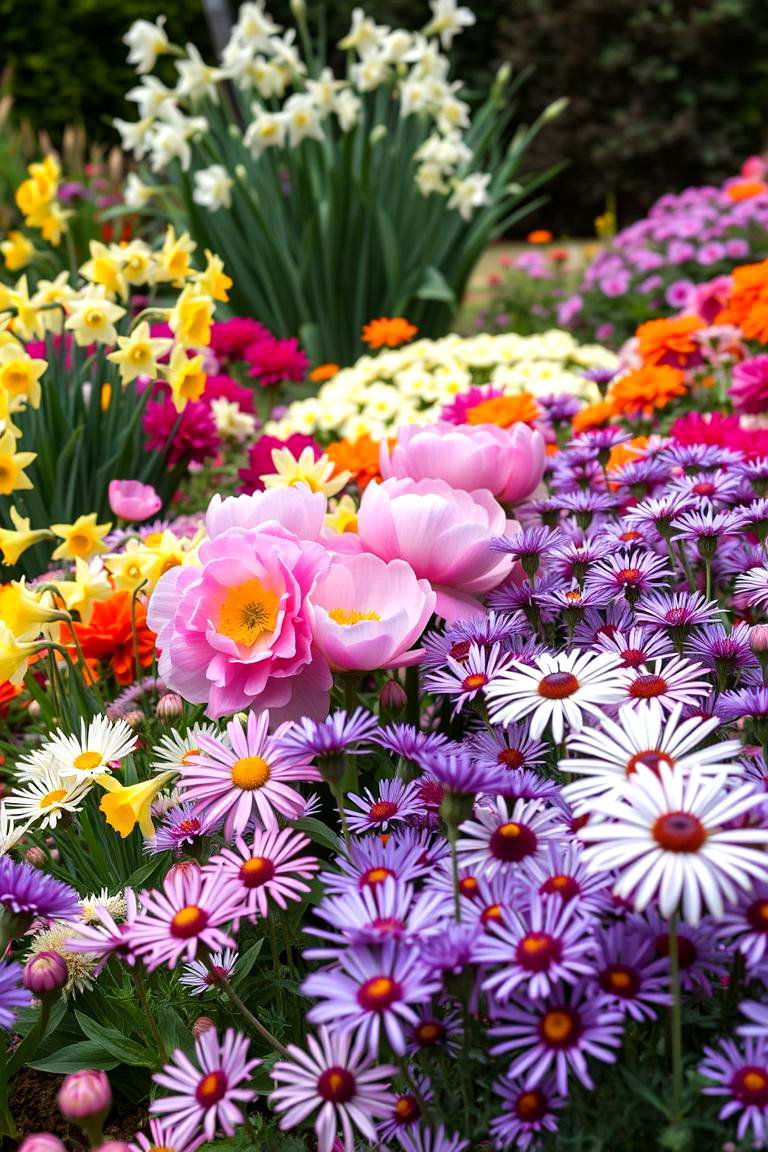
Another great idea is to design a perennial flower bed with a focus on extending the blooming season. Select a succession of perennials that flower at different times, from early spring bulbs like daffodils and tulips to late-blooming asters and mums. The significant advantage is enjoying continuous color and interest in your garden from spring through fall, maximizing the visual impact and enjoyment.
9. Fragrant Sensory Garden
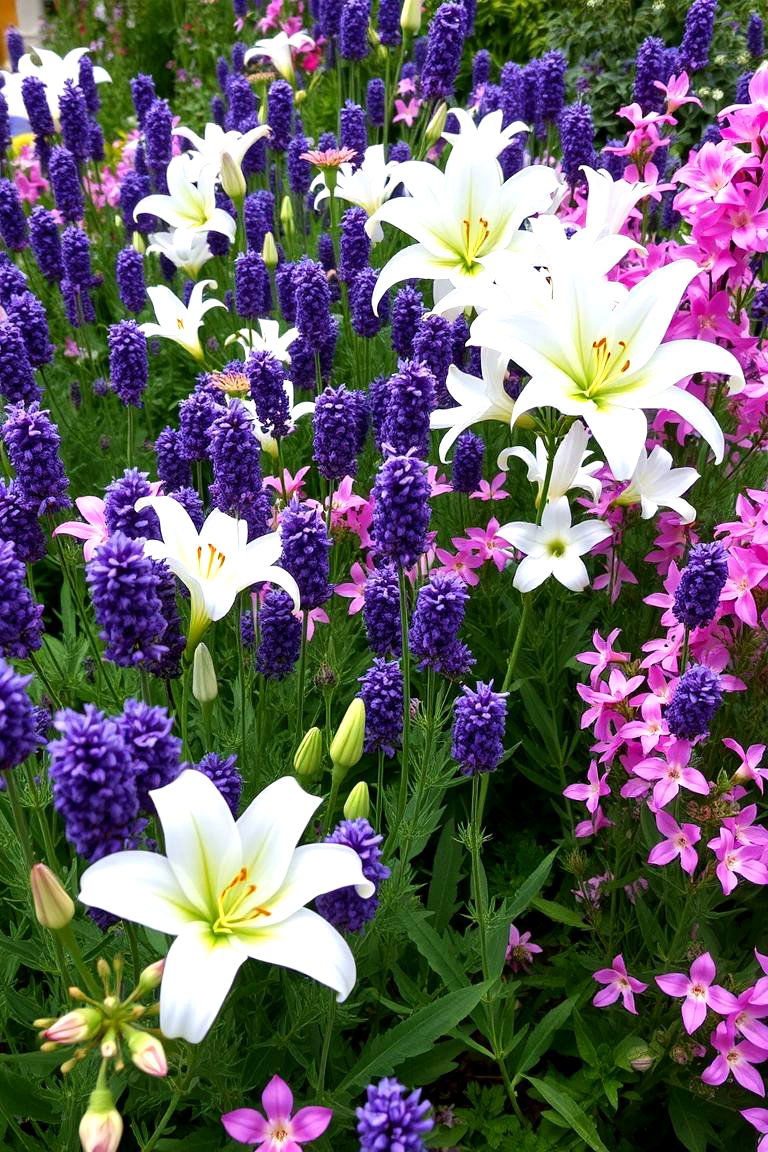
Bringing the sense of smell into your garden design can enhance the overall experience. For a fragrant perennial flower bed, choose plants like lavender, lilies, garden phlox, and dianthus. The key benefit is creating a sensory-rich environment that delights the nose as well as the eyes, adding another dimension to your outdoor space and attracting pollinators with their enticing scents.
10. Cutting Garden Delight
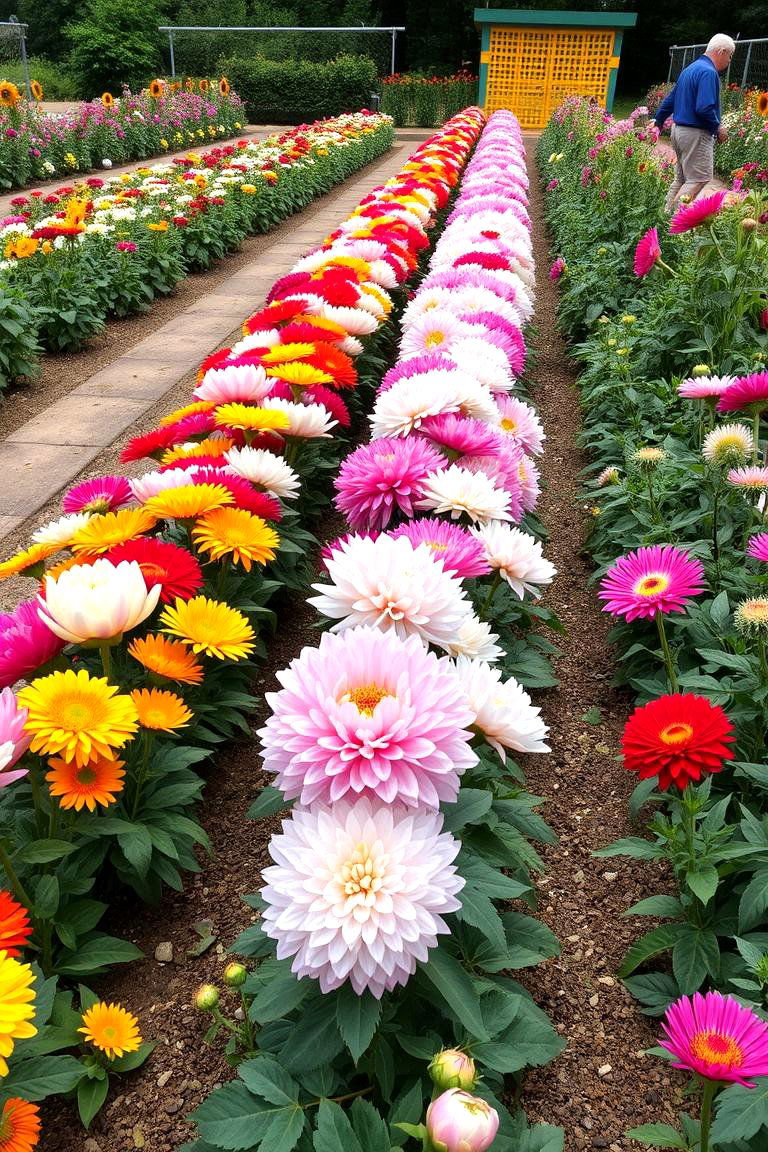
For those who love to bring the beauty of their garden indoors, a dedicated perennial cutting garden is ideal. Plant generous rows of perennials known for their long stems and beautiful blooms, such as peonies, dahlias, zinnias (though technically annuals, they are often included in cutting gardens), and sunflowers. The practical advantage is having a constant supply of fresh flowers for bouquets and arrangements throughout the growing season.
11. Rock Garden Adventure
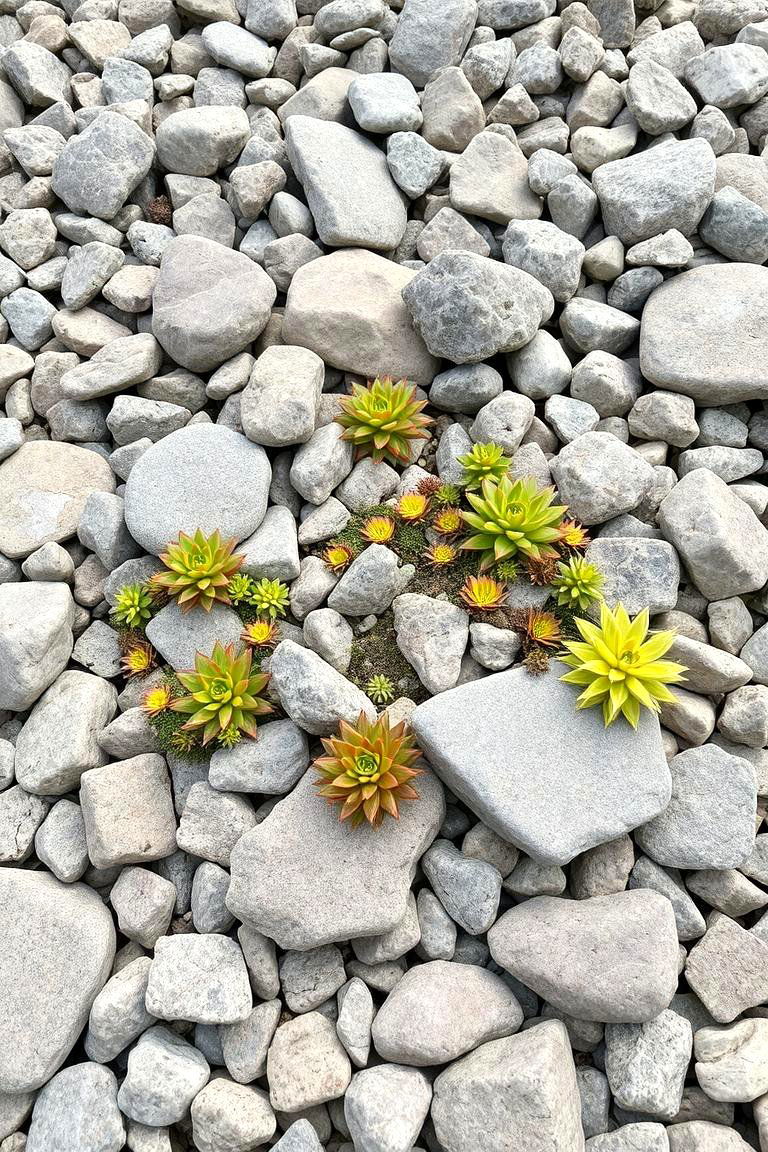
Consider the unique charm of a perennial rock garden. This involves incorporating rocks of various sizes and shapes to create a naturalistic setting for alpine and drought-tolerant perennials like sedums, sempervivums, and small ornamental grasses. The main benefit is adding architectural interest and providing excellent drainage for plants that prefer drier conditions, creating a miniature mountain landscape in your backyard.
12. Wildlife Habitat Haven
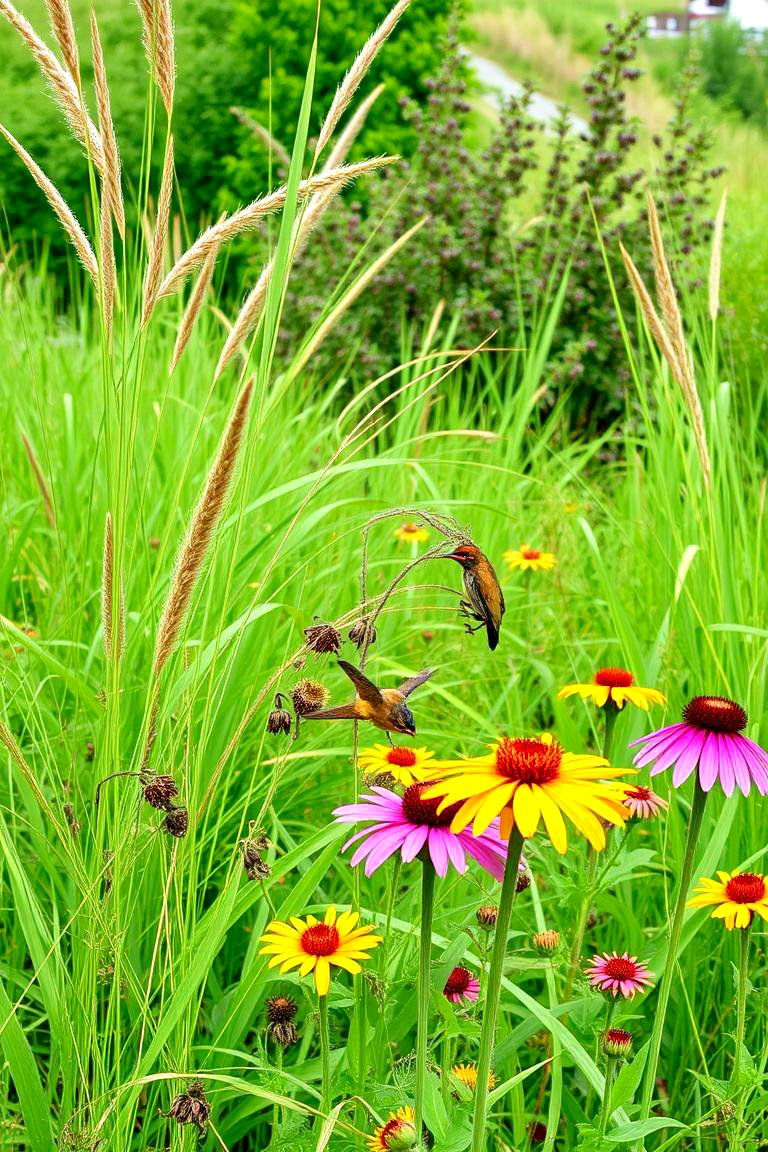
For nature enthusiasts, designing a perennial flower bed to attract wildlife can be incredibly rewarding. Choose plants that provide food and shelter for birds, butterflies, and other small creatures, such as native grasses, berry-producing shrubs (ensure they are perennial), and seed-bearing flowers like coneflowers and sunflowers. The significant benefit is creating a thriving ecosystem in your backyard and enjoying the presence of diverse wildlife.
13. Vertical Interest with Climbing Perennials
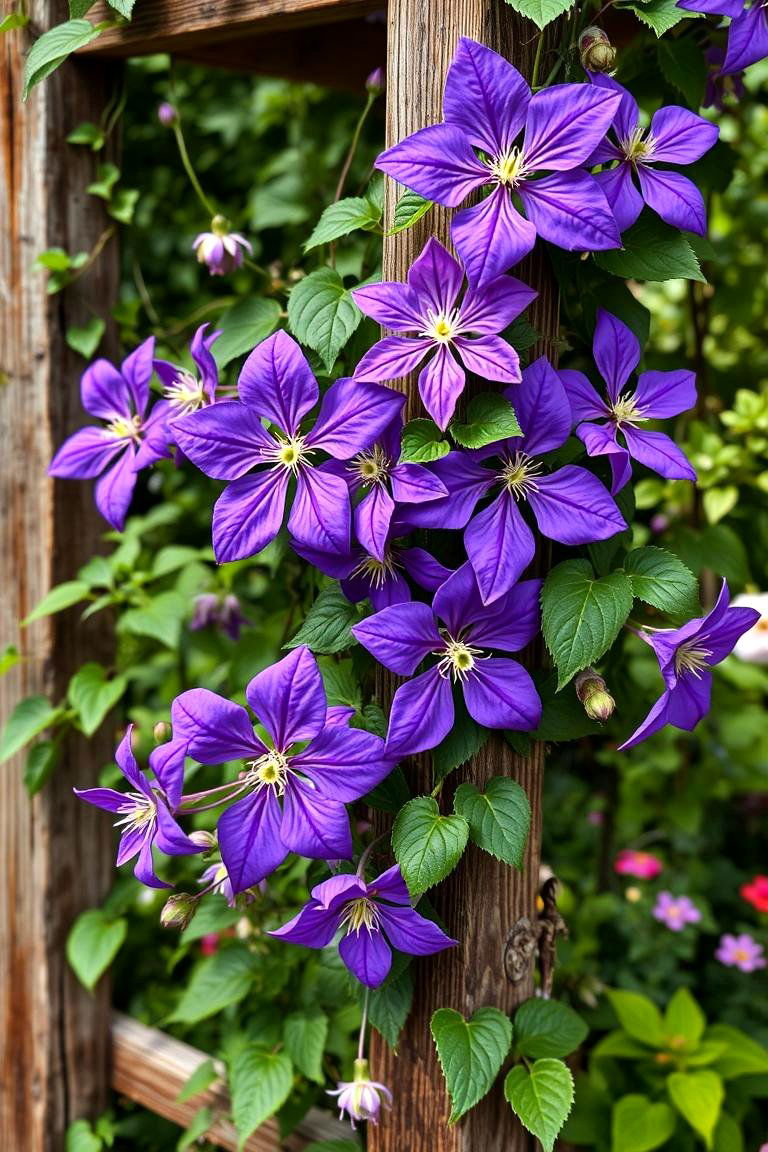
Thinking about adding height and dimension to your garden? Incorporate climbing perennials like clematis, honeysuckle, or climbing roses onto trellises, arbors, or walls. The key advantage is maximizing vertical space and adding a dramatic visual element to your flower bed, creating a stunning backdrop or focal point.
14. Edible Perennial Accents
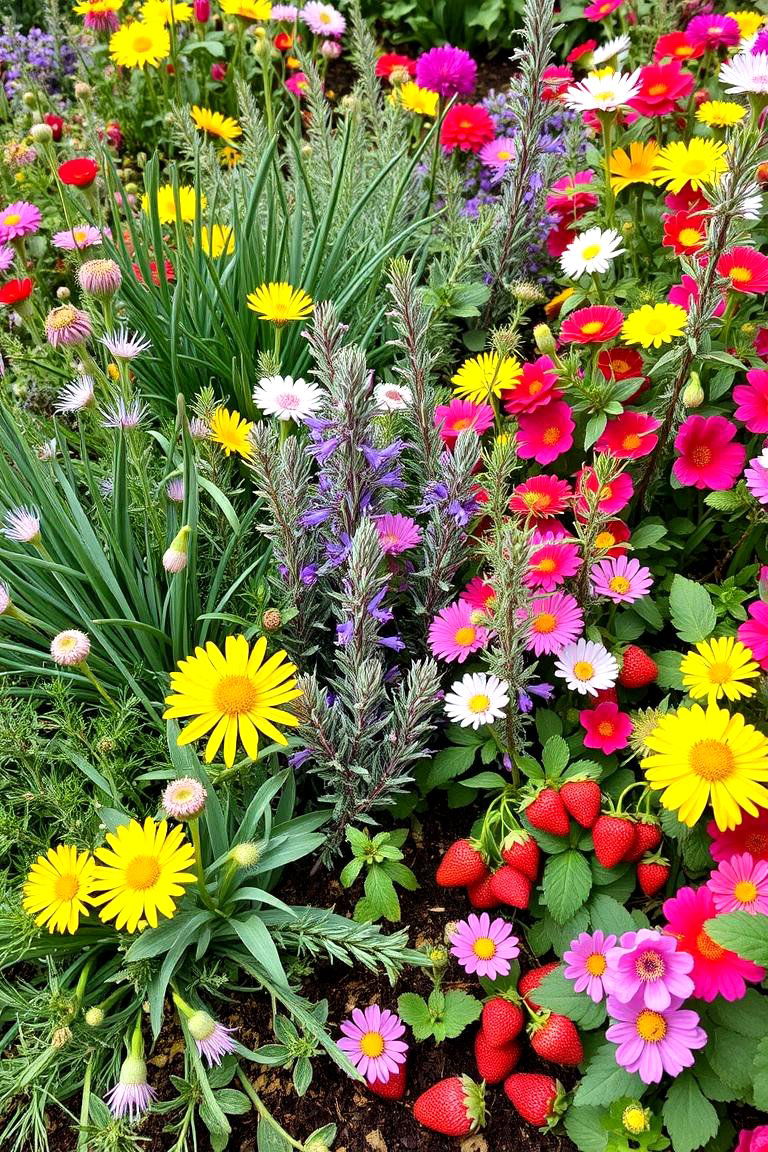
What about incorporating edible perennials into your flower bed design? Consider including herbs like chives, sage, rosemary, and even some fruiting plants like strawberries or rhubarb. The practical benefit is having fresh culinary ingredients readily available while still enjoying the beauty of a flowering garden.
15. Native Plant Sanctuary

For an environmentally conscious approach, create a perennial flower bed using only native plant species. This supports local ecosystems, requires less water and maintenance once established, and provides habitat for native wildlife. The significant advantage is contributing to biodiversity and creating a garden that is perfectly adapted to your local climate.
16. Drought-Tolerant Oasis

In regions with dry climates or for gardeners seeking low-water options, a drought-tolerant perennial flower bed is a wise choice. Select plants like lavender, yarrow, Russian sage, and succulents that thrive in arid conditions. The main benefit is creating a beautiful garden that requires minimal watering, conserving water and reducing maintenance efforts.
17. Formal and Structured Design
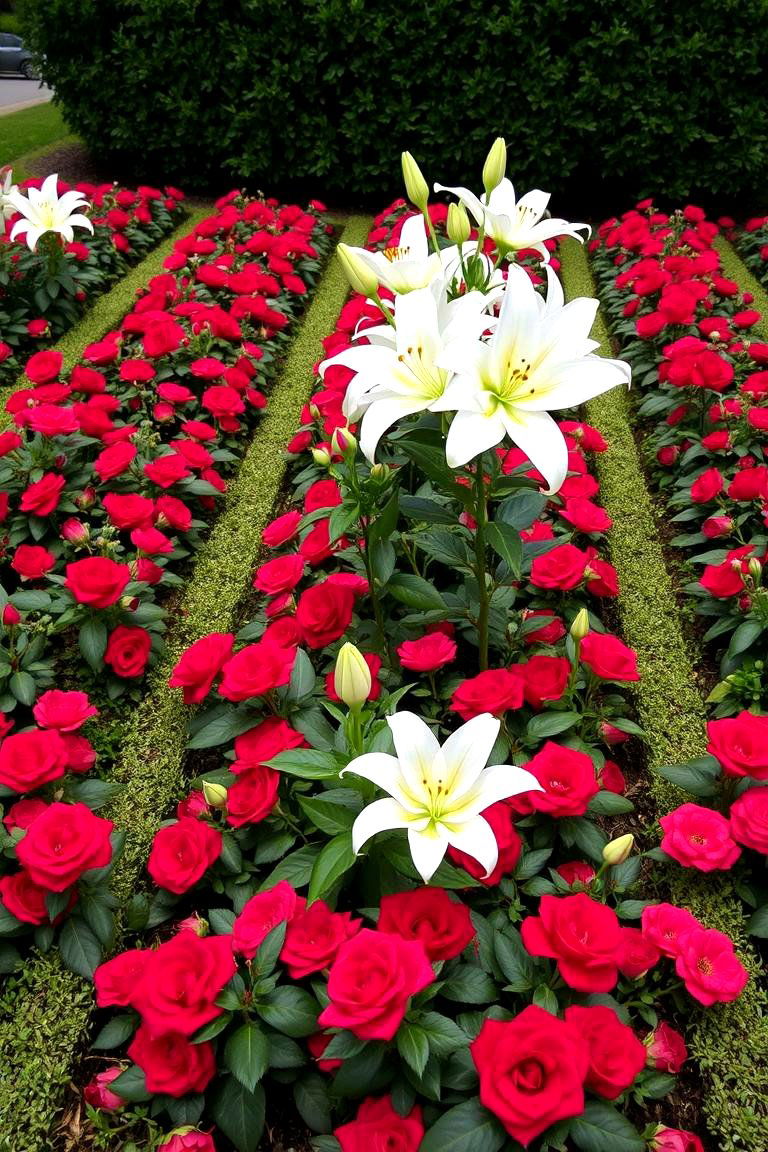
Unlike the relaxed cottage garden, a formal perennial flower bed emphasizes symmetry and clean lines. Use edging plants like boxwood or low-growing perennials to define borders and plant in geometric patterns with plants like roses, lilies, and salvia. The key advantage is creating an elegant and organized garden space that exudes sophistication.
18. Informal Pathway Edging
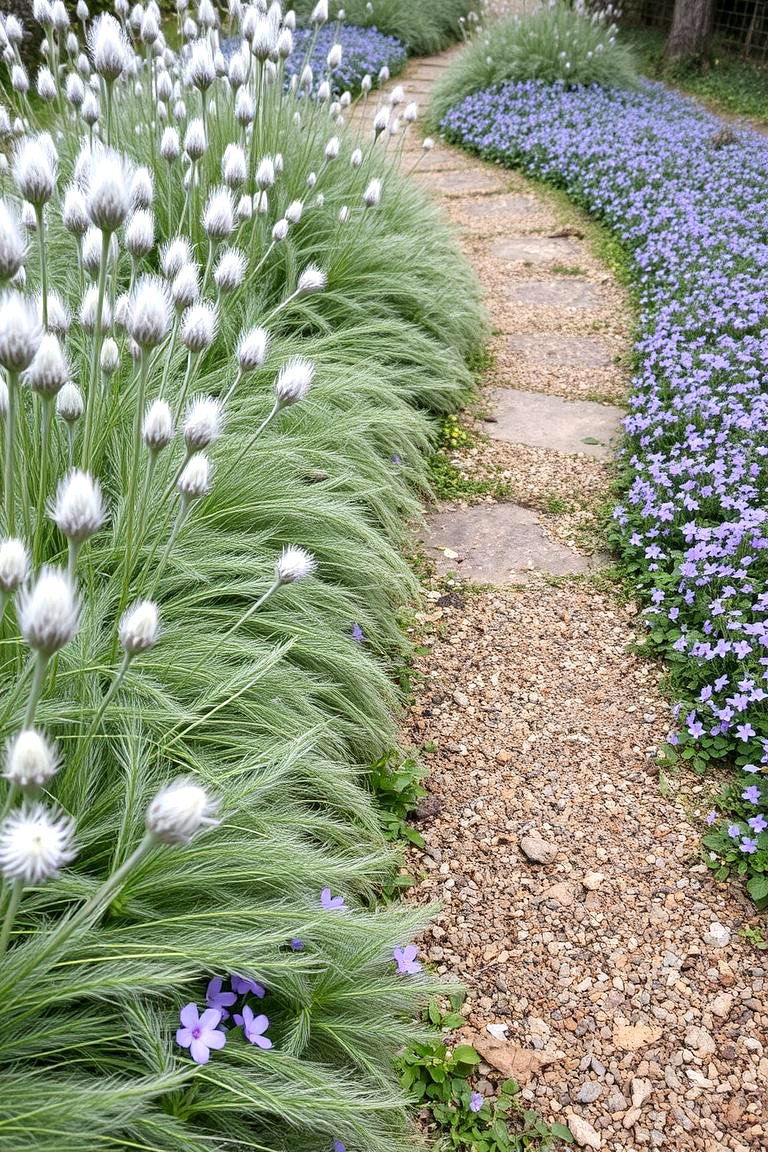
Consider using low-growing perennials to soften the edges of pathways and walkways in your garden. Plants like creeping phlox, candytuft, or lamb's ears can create a charming and informal border, guiding the eye and adding texture along the way. The practical benefit is enhancing the visual appeal of your pathways while requiring minimal maintenance.
19. Container Grouping for Flexibility
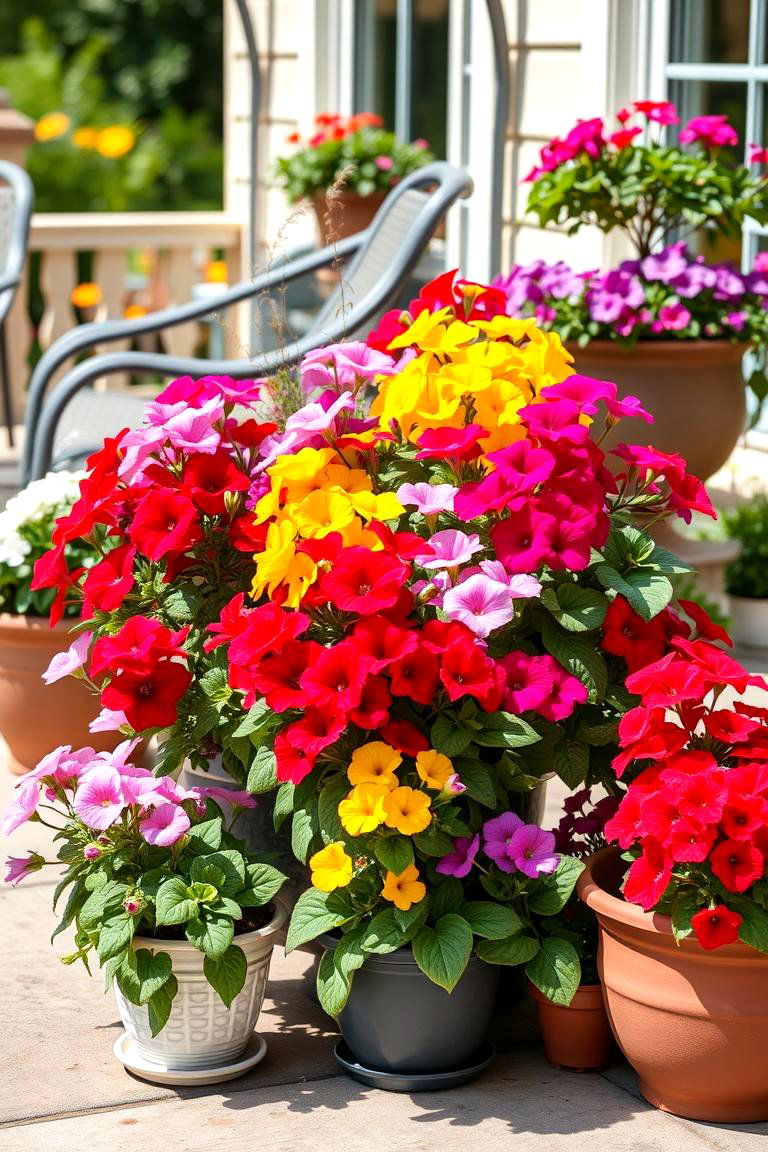
For gardeners with limited space or those who enjoy changing their garden layout, grouping perennial flowers in containers offers great flexibility. Use a variety of pot sizes and shapes to create an interesting display with plants like geraniums, petunias (often treated as annuals but some varieties are perennial), and herbs. The key advantage is the ability to easily rearrange your garden and move plants to different locations as needed.
20. Wildlife Water Feature Integration
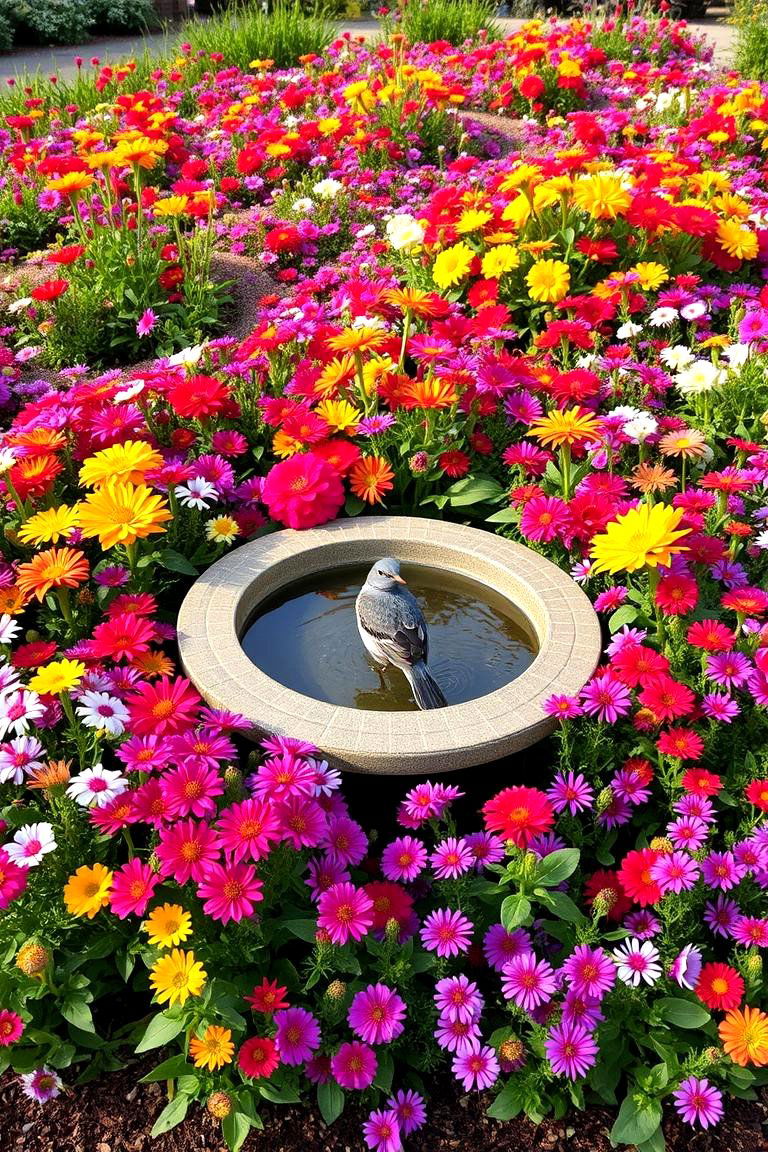
Bringing a small water feature into your perennial flower bed can further enhance its appeal to wildlife. A bird bath or small pond surrounded by native perennials will attract birds and beneficial insects, creating a vibrant and dynamic ecosystem. The significant benefit is increasing the biodiversity of your garden and providing a source of water for local fauna.
21. Evening Scented Garden
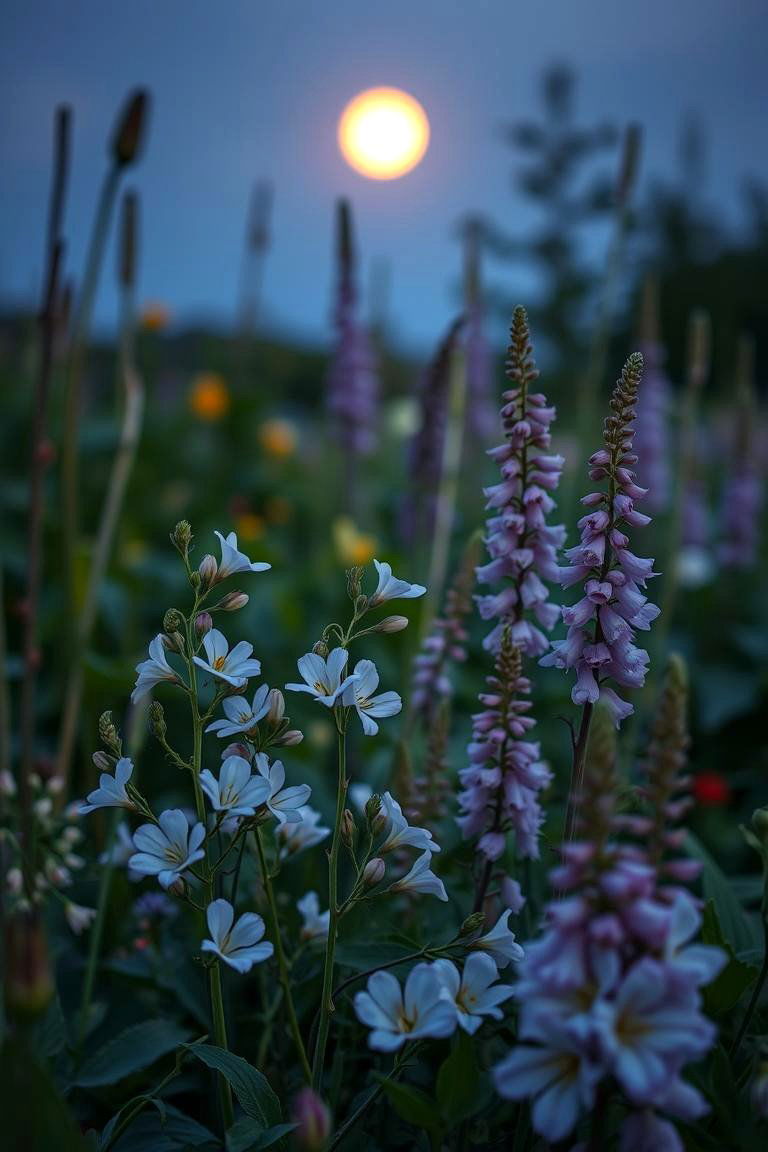
Think about creating a perennial flower bed that releases its most delightful fragrances in the evening. Choose plants like evening primrose, night-scented stock, and some varieties of jasmine (ensure they are hardy perennials in your zone). The main benefit is enjoying a beautifully scented garden during the cooler evening hours, perfect for relaxing outdoors.
22. Winter Interest Perennials

While many perennials die back in winter, some offer interesting seed heads, foliage, or structural elements that can add beauty to the winter landscape. Consider incorporating plants like ornamental grasses, coneflowers with their dried seed heads, and evergreens (if considered within the "flower bed" context). The practical advantage is extending the visual interest of your garden beyond the typical growing season.
23. Layered Planting for Depth
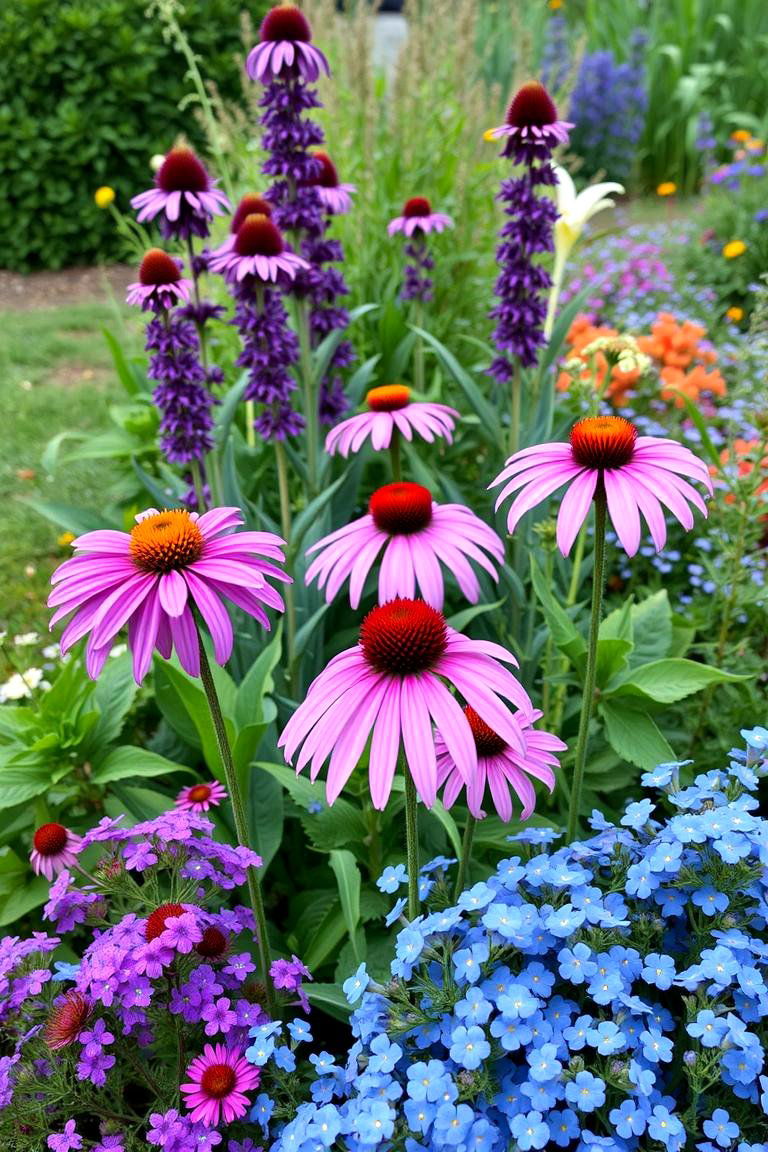
By employing the technique of layered planting, you can create a perennial flower bed with incredible depth and visual interest. Plant taller perennials at the back, medium-height plants in the middle, and shorter ones at the front. The key benefit is maximizing the use of space and ensuring that all your plants are visible, creating a full and abundant display.
24. Themed Color Wheel Garden

Finally, consider designing a perennial flower bed based on the principles of the color wheel. Plant flowers in complementary or analogous color schemes to create visually harmonious or striking combinations. The significant advantage is achieving a well-designed and aesthetically pleasing garden that showcases the beauty of color theory in a natural setting.
Conclusion:
Exploring these diverse perennial flower bed ideas reveals the exciting potential for creating outdoor spaces that are not only beautiful but also sustainable and beneficial. From the low-maintenance charm of groundcovers to the vibrant life attracted by pollinator gardens, perennials offer a wealth of options to suit any gardener's style and needs. By carefully considering factors like sunlight, soil type, and desired aesthetic, you can cultivate a thriving perennial landscape that brings joy and beauty year after year. The enduring nature of these plants ensures a long-term investment in your garden's allure, making the exploration of perennial flower bed ideas a truly rewarding endeavor.


